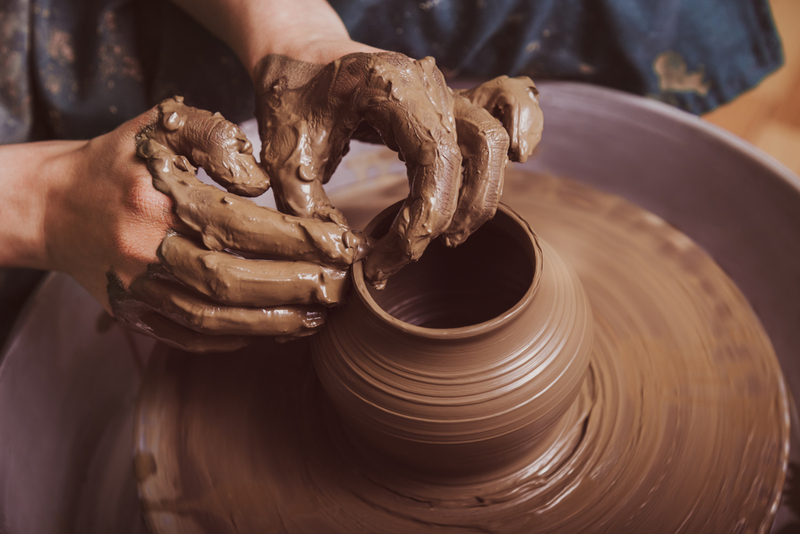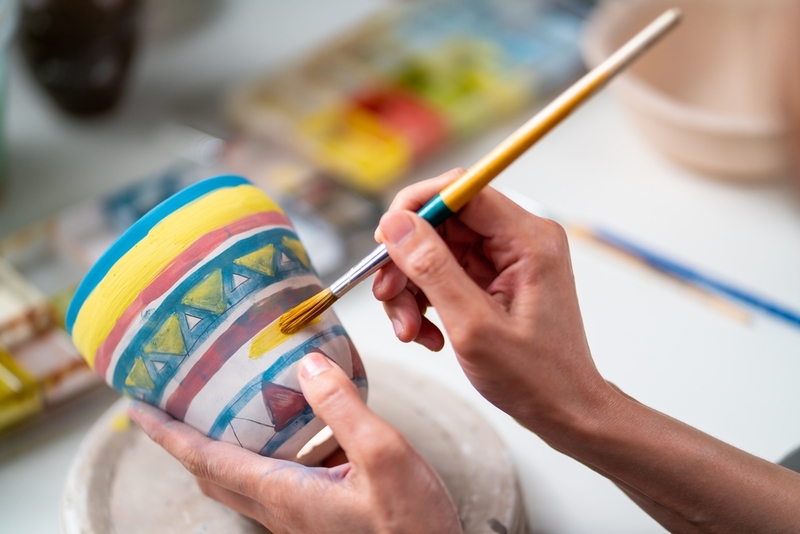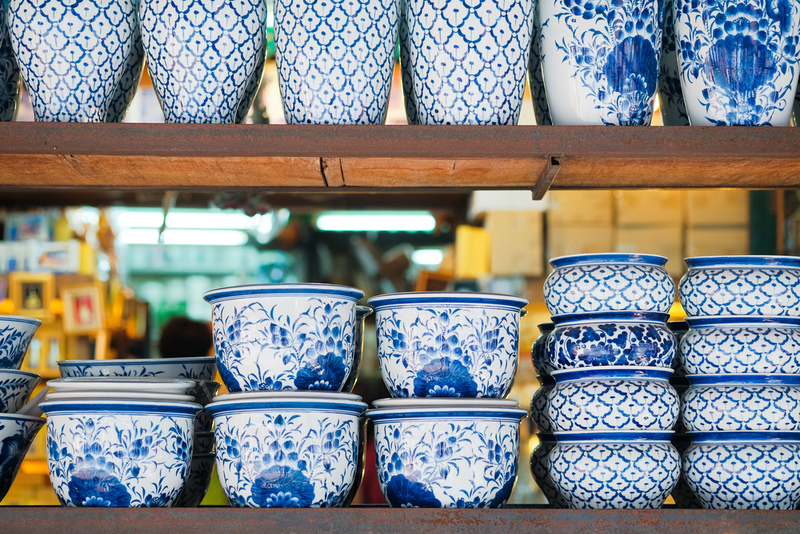Pottery is one of our oldest handicrafts, although it has changed surprisingly little through the years. The Neolithic revolution, 10,000 years ago, produced the oldest known pottery. So how did this happen? Initially, baskets were useful gathering tools, but they couldn’t hold liquids. So water was most likely transported in prehistoric times in woven baskets lined with river clay. And our ancestors gathered clay and molded it by baking it in the sun or in hot ashes. As a result, the first clay pots (and, by extension, all pottery) were created.

Utility to Art
The Greeks are credited with turning pottery into an art form. Their pots and vases were utilitarian in character, designed primarily for drinking and pouring, as well as storing wine and olive oil. Yet, these artisans adorned their vessels with Greek mythological characters and were the first to experiment with adding color to their creations.
It is unknown when the potter’s wheel first appeared on the scene, but it was a significant advancement in technology for pottery. Potters used the slow wheel at the beginning of the Bronze Age. This was essentially a movable platform that allowed them to turn the pot while sitting and working rather than getting up and walking around it. By the next century, most potters in Europe and Asia were using the new wheel. It was a great technological breakthrough for pottery.

Development of the Materials
Sand was mixed with clay in medieval times to build cooking pans that could be used over an open fire. For the same reason, baking casseroles are now constructed from clay mixed with grog, which is ground-up burned pottery. Another important material discovered was Grog back in 939–1038. It is also called firesand and is a raw material usually made from crushed fired pottery, reintroduced back into crude clay to temper it before making ceramic ware. It prevents cracking and warping during the fire process. German potters began producing stoneware around the middle of the thirteenth century. This pottery was created with finer clays and was burnt at a greater temperature than earthenware. Stoneware had a brown or gray color, was robust, and was inherently non-porous.

The Art of Porcelain
The next major innovation in pottery occurred in China around 600 A.D., when potters began to manufacture porcelain. These delicate and artistic pieces, now referred to as exquisite china, were made from white kaolin clay mixed with crushed granite and burnt at extraordinarily high temperatures. European potters quickly followed suit, developing colorful glazes for use in their pottery; these glazes also served to waterproof the pottery. Pottery has evolved as both a craft and an art form over the years and is now a passion for many. It helps to understand the artistic development of a society and helps understand history, reflecting trade activity and exchange networks as well.